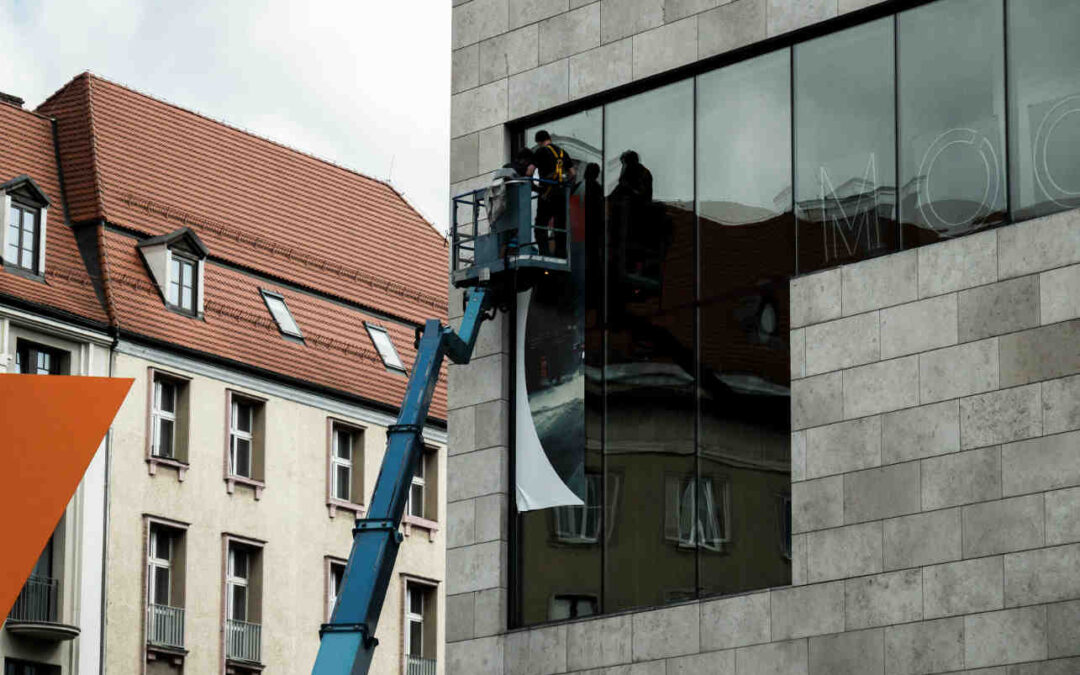What is High-Level Dusting?
High-level dusting is the specialized cleaning of overhead surfaces that most daily janitorial routines cannot reach. In a retail environment, this includes ceilings, beams, HVAC ducts, track lighting, signage, and decorative fixtures that often sit 15–30 feet above the floor.
These areas may not be in direct view, but they accumulate dust quickly. Left untreated, they can compromise both cleanliness and presentation. Professional ceiling cleaning and high-level dust removal ensure that even the most hidden parts of a store remain pristine.
Why Retail Environments Collect Dust Quickly
Retail stores are dust-heavy environments because of their constant activity. Even with nightly cleaning, dust finds its way to ceilings and beams. The main contributors include:
- Heavy foot traffic that carries particles from outside.
- Textile fibers from clothing and soft goods that shed into the air.
- Cardboard packaging dust from constant stocking and restocking.
- HVAC systems that circulate particles upward.
- Seasonal debris, such as pollen in spring or grit in winter.
All of these factors combine to create a steady stream of airborne particles. Overhead surfaces act like magnets, collecting dust where it is least noticed but most harmful when ignored.
Impact on Merchandise and Customer Experience
Customers form impressions quickly, and dust can ruin even the best merchandising. When overhead areas are neglected, the impact is visible in several ways:
- Dust fallout on products, making items look aged or dirty.
- Dim lighting, since dust-covered fixtures block brightness.
- Allergen discomfort, as sensitive customers react to airborne dust.
- A sense of neglect, leaving shoppers with doubts about overall cleanliness.
Even if floors shine and shelves are spotless, dusty ceilings suggest the store is poorly maintained. Over time, this erodes brand trust and can even reduce sales.
Health and Air Quality Considerations
Dust doesn’t just stay on surfaces—it lingers in the air. In retail stores, this can affect both employees and customers. Key concerns include:
- Allergens trapped in dust, such as pollen and fabric fibers.
- Re-aerosolization, when particles are stirred up by HVAC airflow or stocking activities.
- Declining indoor air quality (IAQ), which can cause coughing, sneezing, or discomfort.
Maintaining fresh, breathable air is critical in high-traffic spaces. High level dusting reduces allergen circulation and creates a healthier environment for everyone inside the store.
Safety and Compliance Issues
Beyond comfort and appearance, dust accumulation also poses safety risks. Common issues include:
- Fire hazards, as dust adds combustible material to heat sources.
- Blocked sprinklers, reducing their effectiveness during emergencies.
- Negative safety optics, where inspectors or corporate auditors notice neglected ceilings.
For retailers, overlooking overhead cleaning isn’t just an aesthetic issue—it can have regulatory and liability consequences.
Professional Cleaning Methods
While store staff might attempt to clean high areas, professionals bring safer, more effective methods. These include:
- HEPA-filtered vacuuming, which traps fine particles instead of redistributing them.
- Microfiber extension tools that capture dust without scattering it.
- Trained, insured crews who know how to work safely at height.
- After-hours scheduling, so cleaning never disrupts customers.
For a closer look at how experts perform this work, watch this professional dust capture demonstration. Choosing professionals ensures thorough results while minimizing risks.
Frequency Recommendations for Retail
Not every store needs the same cleaning schedule, but general guidelines help retailers stay ahead of dust buildup:
- Apparel and cosmetics: High fiber release → every quarter.
- General merchandise: Less dust production → every six months.
- High-traffic or flagship stores: Monthly inspections and quarterly cleanings.
Regular cycles prevent overhead dust from reaching visible levels and protect customer experience.
Common Hot Spots Retailers Miss
Even when stores schedule overhead cleaning, some areas are often forgotten. Watch for:
- Track and spotlight fixtures, where halos of dust form.
- HVAC vent rings, which develop dark outlines.
- Tops of signage and hanging displays.
- Sprinkler lines and pipes tucked into the ceiling.
Addressing these hidden zones ensures a consistently clean look across the store.
Signs It’s Time for High-Level Cleaning
Managers don’t always notice dust until customers do. Common warning signs include:
- Visible halos of dust around lights.
- Dull fixtures despite replacing bulbs.
- Fine dust reappearing on shelves soon after daily cleaning.
- Customers sneezing in certain sections.
These signals mean it’s time to schedule ceiling cleaning before the problem escalates.
Building a Cleaning Program
The best retail environments combine daily janitorial service with scheduled high-level dusting. This layered approach ensures both the customer-facing areas and overhead structures remain spotless. A successful program should include:
- Routine audits of overhead spaces.
- Clear separation of daily vs. specialized cleaning tasks.
- Reliable vendor partnerships for quarterly or semi-annual service.
By formalizing this process, retailers protect merchandise, meet safety standards, and reinforce their brand image.
For more details, explore:
Ready to Protect Your Store?
High-level dusting is more than an optional add-on—it’s a cornerstone of retail presentation, safety, and health. Clean ceilings and fixtures keep merchandise attractive, improve air quality, and leave customers with confidence in your store.
👉 Request a High-Level Dusting Audit today and keep your store inspection-ready, safe, and customer-friendly.



Recent Comments